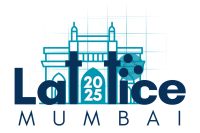Speaker
Description
After the final release of results from the Fermilab Muon $g-2$
experiment, the experimental world average has reached a precision of
124 parts per billion, allowing for a Standard-Model precision test
below 0.2 parts per million if the theory prediction could be evaluated
at a similar level of precision as the experimental result. At present,
this is not the case, diluting the sensitivity to potential
beyond-the-Standard-Model degrees of freedom. Apart from improved
lattice-QCD calculations, a number of ongoing efforts using data-driven
methods aim at improving the current puzzling situation, to ideally
arrive at two independent determinations of the critical hadronic
contributions and thereby increase confidence in the resulting
Standard-Model prediction. In the talk, I will give a summary of the
current status, both for hadronic vacuum polarization and hadronic
light-by-light scattering, discuss the most pressing challenges, and
give an overview over the various avenues for future improvements.
| Parallel Session (for talks only) | Plenary talk |
|---|

